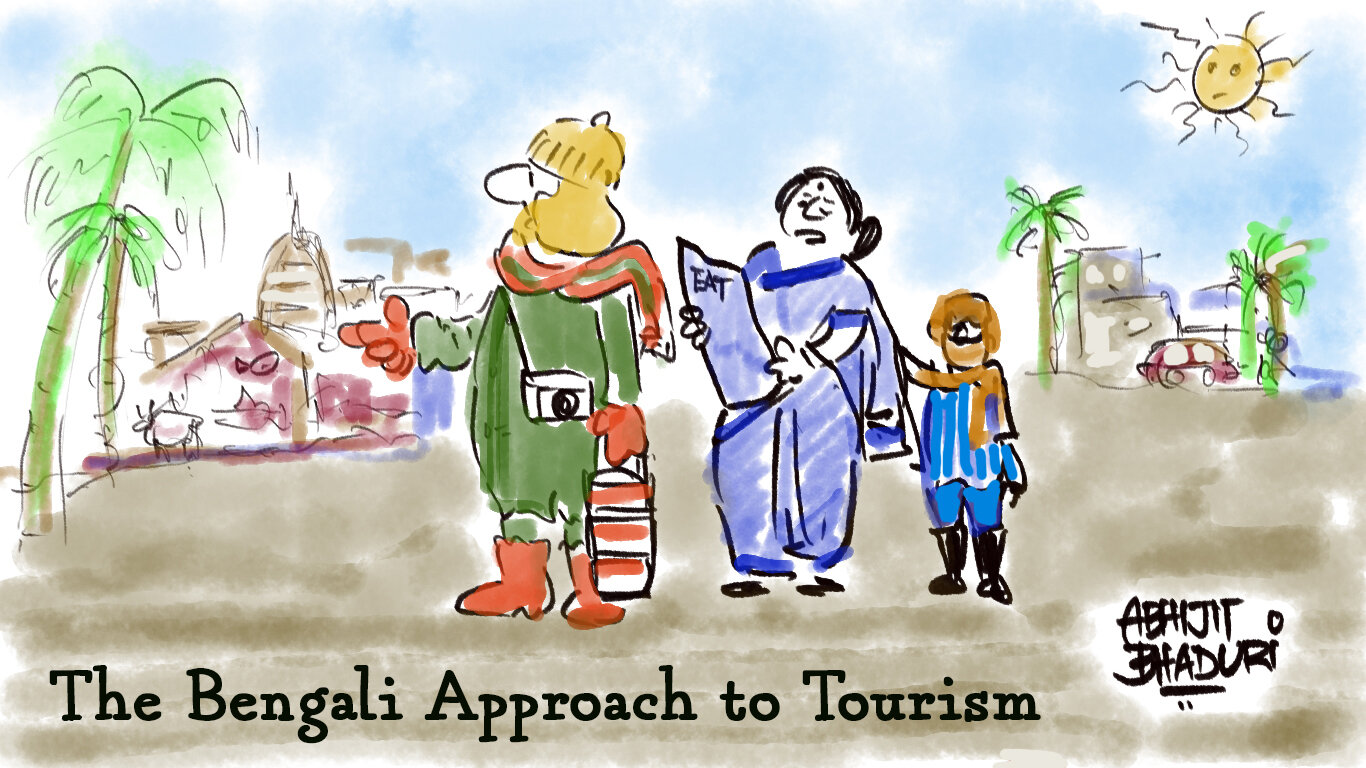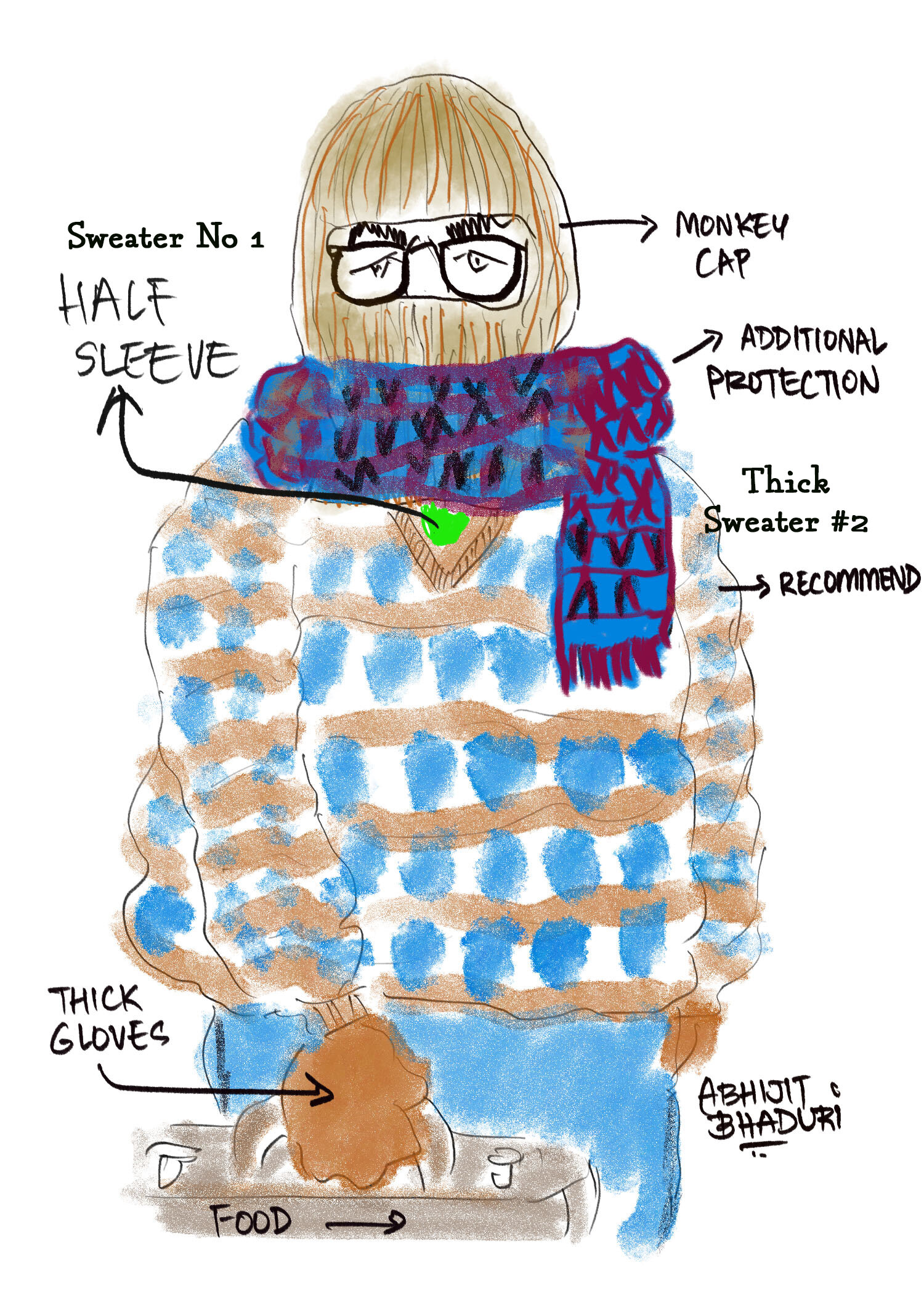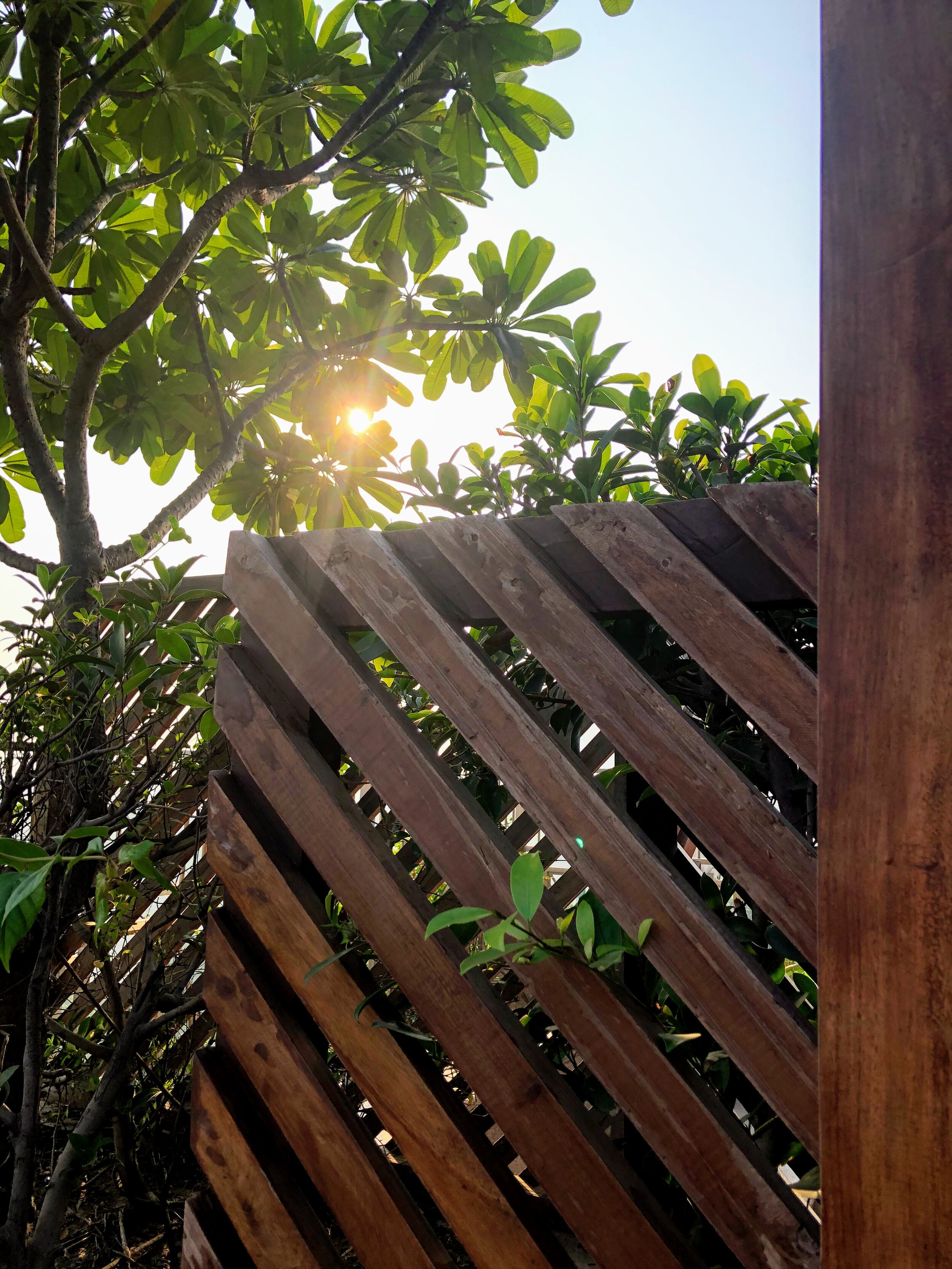The Bengalis fear catching a cold more than anything else
Every year, like any other average Bengali family, my parents would settle down to make an important decision. Where to go for our next vacation. It was an annual ritual. I would dread the moment when a family friend would suggest that we go to some hill station. I would recall the many traumatic hours spent climbing long winding roads at obscure hill stations. It made me a believer. I prayed to God that my agony would end soon. My father had this inexplicable love for all things arduous.
I would always recommend that we go to a sea side resort. But it was a long standing tradition that, whenever decisions were made in my family, my suggestions were meticulously ignored. There would be intense lobbying the night before Baba went to buy train tickets. I would find magazine articles and photos from travel guide books to support my choice. My parents in turn, found some neighbor whose recommendation would be more believable (and cheaper than) my suggestion. They asked other experienced travellers and checked out the best train routes, the options available for accommodation and of course their list of recommended “sight seeing spots”. Look up the word “crowdsourcing” and you will see my family mentioned in the footnote.
As a Bengali I very quickly realised that no matter where we go, dozens of Bengali families would have already reached ahead of us. We would make friends with them. Very soon they would tell us the touristy things to do and the places to eat. Bengalis judge a place by the cuisine (especially non-veg delicacies). The mashima (the generic term to refer to any lady who speaks to parents) is everywhere.
Mashima and the monkey cap
The mashima dressed in saree and sneakers with shawl and monkey cap is everywhere. The same Mashima is all set to trek up to Tiger Hills in Darjeeling or groan her way to the Rohtang Pass. In Nainital, the same mashima is dressed in an orange salwar-kameez all set to go horse riding with a nervous looking pony somewhere.
It is the son of Mashima who has to wear the “maankey cap” – monkey for short. Mashima asks her husband before leaving the hotel, “Where is the maankey?”
The gentleman absent-mindedly points to his teenager and nods.
“Not Chotka! Offf! Where is your maankey cap? Wear it.”
The male folks are dressed in colourful hand knitted sweaters and the mandatory monkey cap (see picture of Monkey Cap here). In a monkey cap with only the face exposed to the whims of Ma Nature, the Bong males are ready to brave any temperature below 50 degrees centigrade.
Recommended Travel Attire Approved By Every Bengali Mother
-
Monkey Cap (No monkey cap = no travel)
-
Additional muffler/ scarf recommended if you want to see Ma smile
-
Half sleeve sweater (completely inadequate by itself).
-
THICK full sleeve hand-knitted sweater
-
Woollen gloves.
And off you go to Goa! Goa may be warm but you may freeze to death before you reach. Can you stop arguing?
I believe that the monkey cap has contributed very significantly towards keeping our community warm and adventurous. As some of you may well know, we Bongs are paranoid about catching a cold. Ergo, the monkey cap is the weapon of choice when we undertake our annual journey to the hill resorts.
See the brilliant article called Thanda Lege Jaabey (Trans: You will catch a cold). That is a fate worse than death for us Bongs. As Outlook magazine said it so eloquently:
Come holiday time, and the Bengalis set off on their discovery of India. Proverbially clad in monkey caps and dhotis, in staid saris and stout sneakers; carrying capacious jholas stuffed with shawls and umbrellas to brave every possible vagary of weather, their voices high-pitched with excitement, you see and hear them everywhere– from the heights of the Amarnath glacier and the meadows of Gulmarg, to the beaches of Goa and the palaces of Rajasthan. No other Indians, with the exception of the Gujaratis, have such an insatiable wanderlust.
How to plan the vacation
Have you ever noticed how the Bongs will always describe a place by the food they had there? This is how the itinerary is drawn up:
” Didn’t you go to Goa this year? Which beach did you find the best?”
“Oh yes, Goa was lovely!! The vindaloo at Anjuna Beach is fantastic. But Chicken Xacuti and Chicken Cafrel was much better at Majorda Beach. But it is All Spice restaurant at Arpora that I’d recommend.”
“Do you recommend the North Goa tour or is it better to do the South Goa circuit?”
“Where do you start… Brittos has very good sizzlers…at Gabriel’s Guest house the Chicken Chettinad is lovely. The fish is also very fresh & lobster is very cheap. But if you like Chinese then you should try Kim Faa. That is the best. So whether you want to do the North Goa or South Goa tour is really depending on what kind of food you like…”
The spot has to be checked for not just the sun rise but also for the shorshe fish or shorba
That’s when the penny dropped. The vacation for the Bong is also a form of culinary sight seeing. The spot has to be checked for not just the sun rise but also for the shorshe fish and shorba.
It is not just the pony ride, but also about confirming what authentic paav bhaji tastes like when eaten with the natives. The thrill lies in being able to discover if one can get authentic Bengali cuisine in Almora (yes, you do).
If you have a Bong friend ask them to recommend a vacation spot. There are only two kinds of vacation spots in the world. The place where the food is awesome. Or those where the food is bloody awful …
“What is the point of going to such a place?” The monkey-cap clad Mesho would ask.
Truer words were never spoken.





Leave a Reply to sanjeev nayyar Cancel reply